The historic markets are due to close in 2028 – but with tensions running high, will this really result in the promised ‘win-win for Londoners and traders’?
It’s 7am on a Tuesday, and business is done for the day at Smithfield Market. Display fridges have already been cleaned out, as have the long walkways – save for a few cardboard boxes and the odd wooden pallet strewn on the floor.
A trader peers out from underneath a giant sign shouting about his company’s “offal range”, spanning tripe, honeycomb and backstraps. As Smithfield prepares to close for good in 2028, he’s quick to give his view – albeit anonymously.
“It’s a real shame, because it’s a bit of history, innit?” he says. “It’ll be sad if it closes, but the money men don’t care about that.”
History is certainly a large part of Smithfield’s appeal. Established in 1133, it is the largest wholesale meat market in the UK. As Rod Addy, director general of the Provision Trade Federation, puts it: “If there’s a spiritual home for the meat industry, it’s Smithfield. Emotionally, there’s a lot invested in it.”
It’s not the only historic market set to close. A short hop away in Poplar, east London, Billingsgate is facing the same fate in 2028. The largest inland fish market in the UK was established in 1327, before moving to its current location in 1982.
The closure of the two markets was announced by the City of London Corporation (CLC), the governing body that owns and operates both sites, in November. CLC also revealed it was abandoning plans to relocate them together to a new £1bn development at Dagenham Docks.
So, why are the markets closing? How will the closures affect traders? And what impact will there be on the supply chain, as well as the local high streets, businesses and people who rely on them?

According to the CLC, the market sites for Smithfield and Billingsgate are “no longer fit for purpose”. It cites limited trading hours, less efficient logistics capability and outdated infrastructure as reasons for their closure. Plus, it says the central London locations fuel congestion and pollution in the capital.
Tony Goodger, head of comms at the Association of Independent Meat Suppliers (AIMS), thinks it’s a fair assessment. “This will not make me terribly popular, but Smithfield has all the trappings of nostalgia and heritage, without necessarily the need to exist there any more,” he says. “Somebody said to me recently that Smithfield is becoming a dumping ground. Because so much of the industry is contract-based, what you’re seeing there in the main is surplus being sold off.”
At present, the plan is to redevelop the Smithfield site into a “cultural and commercial hub”. Billingsgate, meanwhile, is slated to become 4,000 new homes. The CLC says the development will include affordable homes – but that it’s “too early” to confirm how many.
First, an Act of Parliament is needed. The CLC’s legal obligation to run the markets can only be ended by parliament. The corporation deposited a private bill confirming the markets’ move in November, which is being considered by the House of Commons.
The CLC appears confident. After all, last month, its Court of Common Council approved a new 11-person regeneration team whose responsibilities will include “master-planning of the Smithfield/Barbican area”.
“This is about investing in London’s future,” says Chris Hayward, the CLC’s policy chairman. “A bright future lies ahead for these markets, and their redevelopment will contribute billions in economic growth, thousands of new jobs and new homes.
“By ushering in a new era for these historic markets, we’re creating a win-win for traders and Londoners,” he argues.
Northern markets change with the times
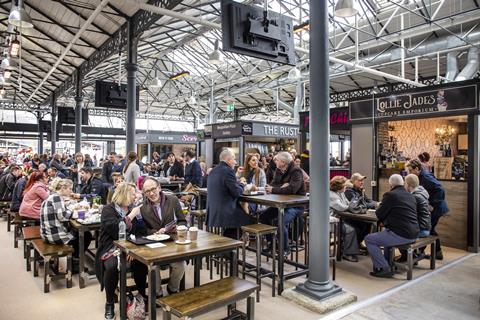
The arguments around the closures of Smithfield and Billingsgate show no sign of abating. But looking nationally, they’re far from the only markets under threat.
“There’s no denying the changing priorities of consumers have caused traditional markets to face real challenges,” says Raymond Linch, MD of Market Asset Management. “There have been some high-profile examples of markets closing or relocating in the name of progress. The ingredients that make a market successful – or otherwise – are complex, and can be affected by external factors such as work habits, new developments or transport infrastructure.”
So, how can markets not only survive but thrive in modern times?
With a history dating back to the 1800s, Doncaster Market is a prime example of a significant market transformation. The newly renovated Corn Exchange section just got a £5m facelift and now includes high-end outlets, such as stylists and beauticians, but also acts as a space for theatre and live music.
Meanwhile, the main indoor market is occupied by a range of fresh produce traders, and the wool market section has been transformed into a street food venue with games and live music.
Darlington Market has also undergone a renaissance. In, 2021, the introduction of a Street Food Hall revitalised the space, and further phases of regeneration have transformed the indoor market, preserving opportunities for traditional traders while welcoming a range of innovative operators, such as wine bars, bakeries and delis.
“High streets have changed. Markets have had to change too,” says Linch. “Doncaster and Darlington have become thriving spaces where families meet, friends catch up, and new businesses can establish their roots.”
Impact on traders
Outside Smithfield at about 8am, one butcher has just finished his shift and is about to head home. He takes a long drag on a cigarette before giving his feelings on this “new era” ushered in by the CLC.
“How are people feeling? No one knows. Nobody has any idea what’s going on,” he says.
It’s a view that would no doubt be rejected by the CLC, which says 70% of Smithfield traders have agreed to move to a ‘New Smithfield’ site inside the M25, while the remaining 30% have decided to transfer their business to others. The corporation also says 90% of Billingsgate traders plan to relocate together to a single site, as the rest consider their options.
“It’s a fantastic step. God knows why it’s taken this long. All the key drivers have been around for the past 70 years”
The CLC says it’s “100% committed” to helping traders find new locations for the markets within the M25 and says the sites will be identified “well before 2028” to help facilitate a “smooth and seamless transition”.
The butcher outside Smithfield is not entirely convinced. “This place has supposedly been getting moved for the past 20 years,” he points out.
It’s a sentiment shared by a number of traders and local businesspeople, although some say this time feels more “real”.
Real or not, the plans appear to have the broad support of traders and the associations that represent them – outwardly, at least. Those at Billingsgate are represented by the London Fish Merchants Association. Its chairman Tony Lyons says: “Change is always a challenge, but we’re determined to move on from here together, so we can still serve our customers in a better working environment. Billingsgate is not dying.”
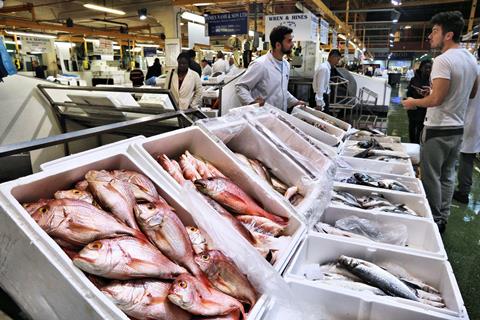
That feeling is echoed by one trader who’s been involved with Smithfield for more than 50 years. “It’s a fantastic step in the right direction. God knows why it’s taken this long,” says Dave*. “All the key drivers have been around for the past 70 years: the place is too small, and we’re in the wrong place at the wrong time, with the wrong landlord.”
However, there are suggestions there’s a very pertinent reason – or perhaps a few million pertinent reasons – for the relative lack of opposition from traders.
“There’s a lot of money being paid out to these people, and that’s why they’re not protesting. That’s what you’d expect, isn’t it? ‘You’re going to shut down our market? F*** off.’ It’s because they’re essentially being paid to keep quiet,” says one anonymous source.
The CLC confirms it has reached an agreement with traders at both markets, which “provides a package of financial support that will enable them to move to new locations”. It says the exact details of the financial support are “commercially confidential”.
However, The Grocer has been told by merchants in the London wholesale markets that the figures are “over £150m for Smithfield and around the £150m mark at Billingsgate”.
Given there are currently 20-plus traders at Smithfield and 40-plus at Billingsgate, according to the CLC, the figures start to feel rather substantial – some allege that certain traders could stand to pocket £5m.
Certainly, the phrase “take the money and run” comes up a lot during The Grocer’s conversations with market traders and nearby businesses.
“I reckon at least 50% of the traders are gonna take the money and run. Everyone’s gonna go independent and separate. There’s no plan in place, and I’ve heard there’s big money on offer,” says one Smithfield trader.
Dave, though, who has knowledge of the Smithfield negotiations, claims there “won’t be any trade lost” despite some inevitable consolidation. “More than 100% of the throughput will continue,” he says.
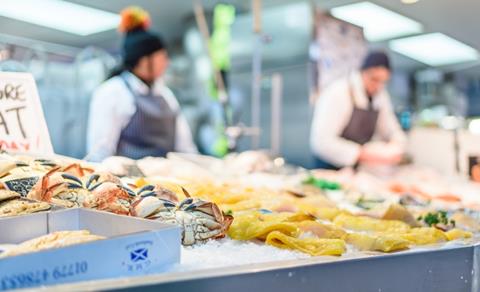
Impact on supply chain
Those in favour of the closures argue Smithfield and Billingsgate have had their day. At its peak, the former was handling 500,000 tonnes of meat and the latter 120,000 tonnes of fish annually, found an independent report in February by consultancy firm Artefact, commissioned by the CLC. Those figures are now circa 100,000 and 20,000.
The report also points out 80%-85% of orders are placed remotely at both markets, with only 15%-20% taking place ‘on the shop floor’. As such, the CLC says its plans will have “minimal impact” on the supply chain.
“The trade has changed so much,” says Dave. “Face-to-face trade is now less than 10% of our business.”
At the same time, the report acknowledges independent retailers such as butchers and fishmongers “continue to utilise the markets”, and both “play a major role in serving out-of-home consumption channels”.
“These customers rely on the markets for their ability to fulfil high-volume and short-notice orders at competitive prices,” the report adds.
It states 8%-10% of meat and 9%-11% of fish consumption in London and the south east still comes through them – not exactly small fry.
Read more:
-
British fruit & veg should be put at heart of NHS plan, growers say
-
Abandon SPS border checks ‘immediately’ urges AIMS
-
Red Tractor: New tiered approach to pig welfare standards and labelling gets go-ahead
-
Sainsbury’s launches ‘premium’ online butcher and fishmongers in food-to-order expansion
The report adds the markets have four widely recognised, key qualities: historic value; ability to serve small-volume orders and specialty buyers; hub functionality; and inter-trading capabilities.
Goodger of AIMS believes local businesses, along with “the few members of public who shop there”, will be the only ones truly affected by closure of the market supply. He thinks local restaurants, bars and hotels will likely turn to “good-quality catering butchers; London has several”.
Still, it’s not always that simple, says Gavin Peckover, owner of Peckover Butchers, on east London’s Roman Road. “Smithfield is handy when we’re short of something,” he points out. “And it’s good to get chicken from them, because you can get small amounts – that’s what it’s good for. Or if you’re a caterer after cheap stuff, that’s the place to go, because there’s lots of shops there and they’re all competing – a good thing.”
“There will be some impact on the trade within the London area,” agrees Addy. He wonders whether small businesses will be able to “secure supplies on the terms they previously had”, potentially pushing up prices.
“They need to be assured of alternative routes of supply. And that’s more of a challenge for fish, because the meat supply chain is more developed and diverse. There are fewer options to get fresh fish, so there are cost implications, and independent fishmongers are challenged anyway, so it’s going to be harder for them.”
‘We trusted you’: the Dagenham Dock move debacle
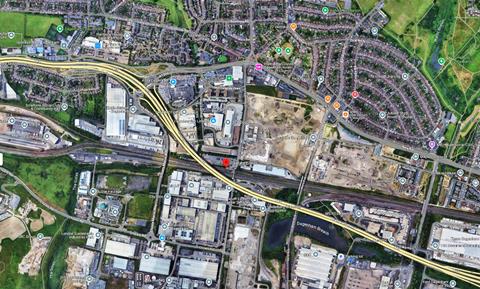
The City of London Corporation might have smelled trouble for its plan to move Smithfield and Billingsgate markets to Dagenham in early 2023, when Havering Council objected to the move. The council cited a law from 1247 banning any markets being set up within a day’s sheep drive (6.6 miles) of Romford Market.
The plan to move the two markets, plus New Spitalfields, to the former Barking Reach Power Station at Dagenham Dock was announced in January 2020 and given the green light in 2022. The CLC estimated it would bring 2,700 new jobs to Barking and Dagenham and generate around £14.5bn for the UK economy by 2049.
“After a wide-ranging search and thorough assessment of several other sites, Dagenham Dock was identified as the clear preference and most suitable site to co-locate the markets. With 42 acres of industrial land, connections to the rail network and the River Thames, the site has a number of clear advantages,” the CLC said at the time.
But just under five years and an estimated £300m later, in November 2024, the CLC confirmed it had ended its interest in the £1bn co-location project. It cited “escalating costs” and said it would “pivot to supporting the traders to relocate”.
Alicia Weston, who is acting as spokesperson for three independent fishmongers opposing the CLC’s plans, recalls the impact the decision had on some local businesspeople.
“They were just horrified. One guy was almost crying down the phone at me,” she says. “I’ve told the CLC: no one is going to trust you again. You said the markets were moving to Dagenham, we trusted you, and then we found out in an underhand manner it was cancelled – no one told us. So, why should we trust you when you say they’re moving somewhere else?”
The high street
Indeed, a group of three fishmongers from Ridley Road Market in Hackney, east London, say they will go bust if Billingsgate closes without a replacement. Along with their spokesperson Alicia Weston, they’ve filed a petition with parliament fighting against the CLC’s plans.
One of them, Waheed Aslam, runs the Mediterranean Fish Shop with his business partner Aras Swara. He says they go to Billingsgate to buy their fish every day from Tuesday to Saturday. “At Billingsgate, we get to hand-pick the fish. If it closes, we won’t have that choice,” he says. Traders might move to a delivery service, but his past experiences have not been good. “They’d deliver whatever they want,” he says. “We need to go there personally and check.”
“At the moment they can’t put the prices up too much, because they know there are plenty of options literally under the same roof,” he adds. “It’s simple: if there’s less competition, they can charge whatever they want.
“If they’re going to close Billingsgate, that’s fine, but we need a replacement. We need guarantees. I don’t believe there’s going to be a replacement. I feel like the CLC just wants to wash their hands of it. I don’t think they were expecting us to put up a fight. We’re way down the food chain. They just want to pay people off.”
When asked whether it could guarantee replacements for Smithfield and Billingsgate, the CLC did not answer. However, the corporation did say it was “fully committed to supporting the traders at both markets to find new locations”.
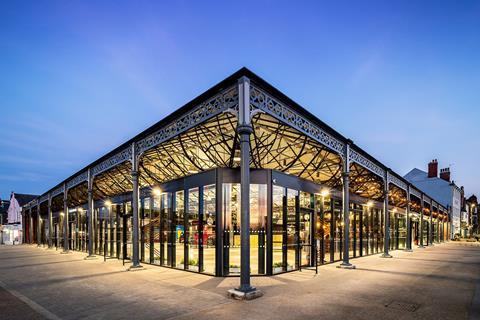
If the markets do close, the high street businesses that rely on them could move to a wholesaler. However, Aslam points to a pitfall. “With wholesalers you usually have to buy pallets of fish, it’s not just a couple of boxes here and there, like we do. It wouldn’t be practical for us to buy that quantity of fish.”
Multiple other small, local businesses told The Grocer that the closures would affect them negatively.
“It’s gonna make it harder. But we’ll have to survive,” says John, a butcher at Smithfield Wholesale Butchers, which is just across the road from Smithfield but operates independently. “They don’t consider us, or any of the little shops.”
“All over this, like a bad rash, is less competition. What do you think that’s going to do to prices – for the poorest people?”
The worry is echoed by Piotr Nocon, director at Sutton & Sons, which has two fishmongers and three fish & chip shops in east London. “It’s going to be really bad to be honest, because we buy lots of fish from Billingsgate. I think the biggest thing will be the freshness, because we’ve tried using other companies and their quality was much, much worse.”
There will also be an effect on other businesses, he says. About 15 restaurants buy their fish from Sutton & Sons, which also supplies four schools. “That’s a lot of kids,” Nocon adds. “I think big wholesalers like Daily Fish Supplies, who have lots of power, are just going to take over everything. Will we lose our school business to them? If we can’t get quality fish at the prices we get from Billingsgate, then definitely. But of course, no one talked to us; nobody really cares, I don’t think.”
Meanwhile, on Broadway Market, fishmonger Fin & Flounder sources much of its fish direct from Brixham in Devon. However, manager Nicholas Wieland says certain products “our customers need”, such as boxes of sardines and tuna loin, come from Billingsgate.
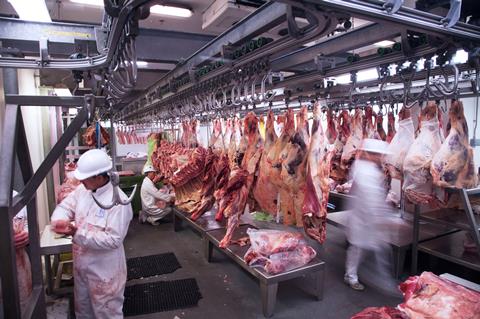
“The main problem is likely to be that prices will go up,” he says. “I can almost guarantee it will have an impact. Not everyone has the luxury to buy from Brixham like we have, so your small, lower-priced fishmongers who buy exclusively from Billingsgate are going to be screwed, 100%.”
Alicia Weston, the Ridley Road fishmongers’ spokesperson and founder of food poverty charity Bags of Taste, agrees that “all over this, like a bad rash, is less competition”. For her, “it’s wrong from a deep level of understanding of food poverty”.
“Ridley Road is a low-end market supplying cheap fish to, essentially, poor people. What happens when more than half the fishmongers in Ridley Road shut down, taking it to two? What do you think that’s going to do to prices – for the poorest people?
“And when the prices go up, and their favourite fishmonger is gone, customers have one less reason to come to Ridley Road. These things kill communities. It’s this constant chipping away. We keep nibbling away at the edges of things until there’s nothing left. Ridley Road Market is a common good. And then years later, somebody will turn around and go: Oh, what happened to all the independent fishmongers?”
*Name changed to protect anonymity




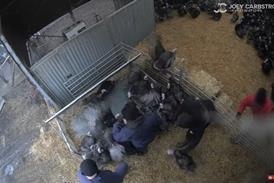



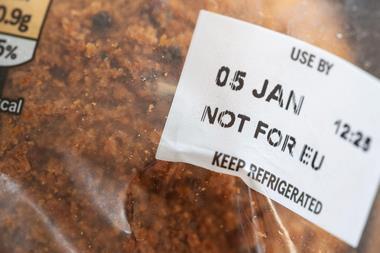
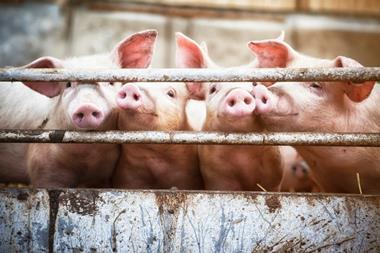
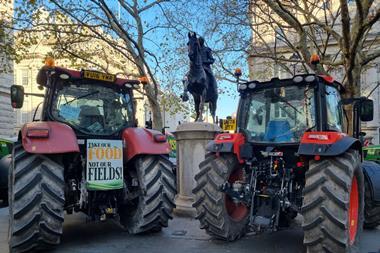
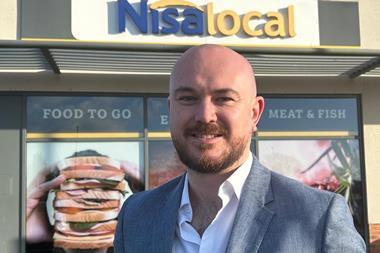




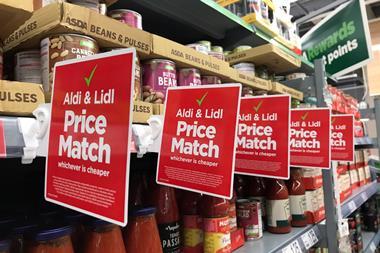
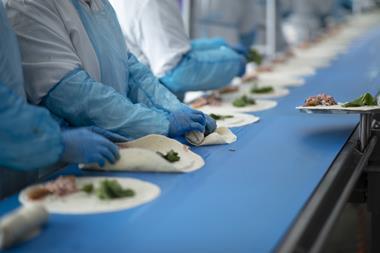


No comments yet